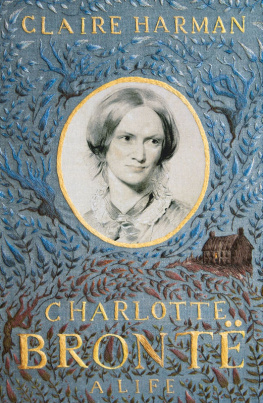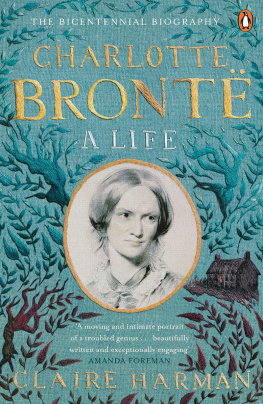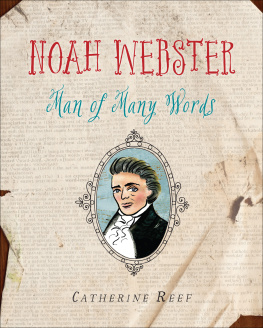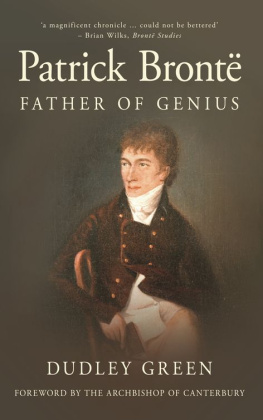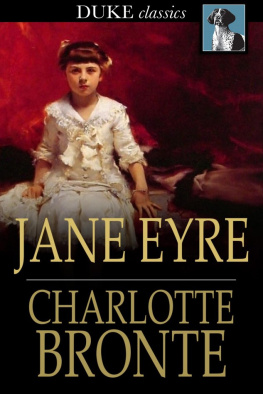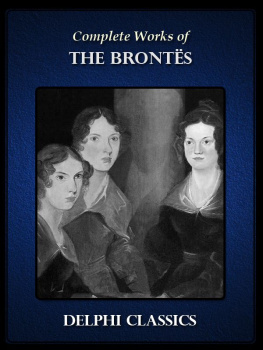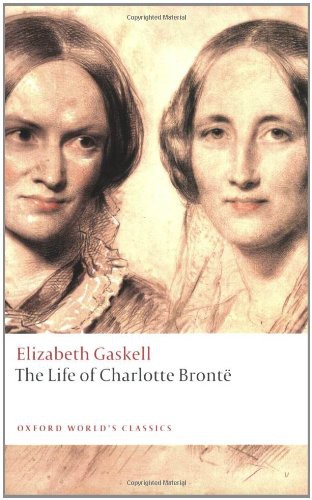
Table of Contents
FROM THE PAGES OF THE LIFE OF CHARLOTTE BRONT
The parsonage stands at right angles to the road, facing down upon the church; so that, in fact, parsonage, church, and belfried school-house, form three sides of an irregular oblong, of which the fourth is open to the fields and moors that lie beyond. (page 13)
For a right understanding of the life of my dear friend, Charlotte Bront, it appears to me more necessary in her case than in most others, that the reader should be made acquainted with the peculiar forms of population and society amidst which her earliest years were passed, and from which both her own and her sisters first impressions of human life must have been received. (page 18)
Children leading a secluded life are often thoughtful and dreamy: the impressions made upon them by the world withoutthe unusual sights of earth and skythe accidental meetings with strange faces and figures(rare occurrences in those out-of-the-way places)are sometimes magnified by them into things so deeply significant as to be almost supernatural. (page 74)
Human affairs are mutable, and human resolutions must bend to the course of events. We are all about to divide, break up, separate. Emily is going to school, Branwell is going to London, and I am going to be a governess. (page 107)
I am no teacher; to look on me in that light is to mistake me. To teach is not my vocation. What I am, it is useless to say. Those whom it concerns feel and find it out. (page 326)
I want us all to get on. I know we have talents, and I want them to be turned to account. (page 166)
Perfection is not the lot of humanity; and as long as we can regard those we love, and to whom we are closely allied, with profound and never-shaken esteem, it is a small thing that they should vex us occasionally by what appear to us unreasonable and headstrong notions.
(page 231)
There is no more respectable character on this earth than an unmarried woman, who makes her way through life quietly, perseveringly, without support of husband or brother. (page 232)
She went on with her work steadily. But it was dreary to write without any one to listen to the progress of her tale,to find fault or to sympathise,while pacing the length of the parlour in the evenings, as in the days that were no more. Three sisters had done this,then two, the other sister dropping off from the walk,and now one was left desolate, to listen for echoing steps that never came,and to hear the wind sobbing at the windows, with an almost articulate sound. (pages 317318)
The characters were her companions in the quiet hours, which she spent utterly alone, unable often to stir out of doors for many days together. The interests of the persons in her novels supplied the lack of interest in her own life; and Memory and Imagination found their appropriate work, and ceased to prey upon her vitals. But too frequently she could not write, could not see her people, nor hear them speak; a great mist of headache had blotted them out; they were non existent to her. (page 402)
I appeal to that larger and more solemn public, who know how to look with tender humility at faults and errors; how to admire generously extraordinary genius, and how to reverence with warm, full hearts all noble virtue. To that Public I commit the memory of Charlotte Bront. (page 454)

Published by Barnes & Noble Books 122 Fifth Avenue
New York, NY 10011 www.barnesandnoble.com/classics
The Life of Charlotte Bront first appeared in 1857.
Published in 2005 by Barnes & Noble Classics with new Introduction, Notes, Biography, Chronology, The Legacy of, Comments & Questions, and For Further Reading.
Introduction, Notes, and For Further Reading
Copyright 2005 by Anne Taranto.
Note on Elizabeth Gaskell, The World of Elizabeth Gaskell and
The Life of Charlotte Bront, The Legacy of The Life of Charlotte Bront, and Comments & Questions
Copyright 2005 by Barnes & Noble, Inc.
All rights reserved. No part of this publication may be reproduced or transmitted in any form or by any means, electronic or mechanical, including photocopy, recording, or any information storage and retrieval system, without the prior written permission of the publisher.
Barnes & Noble Classics and the Barnes & Noble Classics colophon are trademarks of Barnes & Noble, Inc.
The Life of Charlotte Bront
ISBN 1-59308-314-9
eISBN : 978-1-411-43256-7
LC Control Number 2004116678
Produced and published in conjunction with:
Fine Creative Media, Inc.
322 Eighth Avenue
New York, NY 10001
Michael J. Fine, President and Publisher
Printed in the United States of America
QM
1 3 5 7 9 10 8 6 4 2
FIRST PRINTING
ELIZABETH GASKELL
Elizabeth Cleghorn Stevenson was born in London in 1810, the daughter of Unitarian parents. Her father chose a variety of different careers, including experimental farming, preaching in the Unitarian church, and writing for various periodicals. Her mother died the year after Elizabeth was born, and of the eight children she bore, only two survived childhood. Elizabeth was raised by her maternal aunt, Hannah Holland Lumb, whose farm in rural Knutsford provided a serene and happy childhood for the young girl. Unitarians believed in education for girls, and after lessons at home Elizabeth was further educated at a progressive boarding school.
Elizabeths ties to her brother John were kept up through letters and occasional visits. After setting sail for India in 1828, he disappeared without a trace, leaving Elizabeth stunned and her father in deep depression. Her fathers failing health compelled Elizabeth to travel to London to nurse him until his death the following year. After his death, Elizabeth visited a variety of cultured family members, and met William Gaskell, an assistant Unitarian preacher in Manchester, whom she wed in 1832.
Although the Industrial Revolution thrummed in the background of her childhood, it was Williams Manchester congregation that first put Gaskell in touch with the grim realities of factory work. Cotton mills dominated the labor force in the city, and filthy shanty towns housed thousands of exploited, undernourished mill workers. William and Elizabeth were kept busy by their congregation and by their efforts to address the social problems that plagued the booming industrial city of Manchester. Although she had written only personal diaries, and was also busy raising her own family in the early years of her marriage, Gaskells community work inspired her to collaborate with her husband on the narrative poem Sketches Among the Poor, No. 1, which was published in 1837.
Gaskells happy, busy life was interrupted by tragedy in 1845 when her infant son died of scarlet fever while on a family vacation. Overcome by grief, Gaskell followed her husbands advice and became absorbed in her writing. The result was her first novel, Mary Barton: A Tale of a Manchester Life (1848), which earned her instant successand hostile criticism from the cotton mill owners whom she so unsparingly portrayed. Gaskell went on to write six other novels:
Next page

